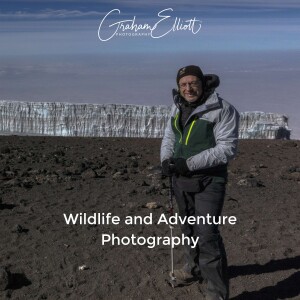
Send us a text
If you know what you're doing, a short look at a landscape will tell you a lot about what the inhabitants have been doing and who they are.
The term for the evidence left by animals, of their presence, is spoor. This includes dung, footprints and other evidence such as damaged vegetation.
Animal sounds are also very helpful, not just from the animal you're looking for, but alarms calls that come from the animals it preys on if it's a predator.
If you're looking for mammals at sea, such as humpback whales, a 'spout' or 'blow' tells you where the animal is (as will a breach, but that makes it very easy!).
It's also helpful to know something of an animals habits and behaviours if you're trying find one.
- Is it more active at night or during the day?
- Where does it hangout?
- Is it migratory?
- What does its footprints look like and how big are they?
Basically, the more you know, the better.
And all of this applies equally to wildlife you might come across at home!
It's time for another podcast...
Support the show
And, if you've found this useful, download my free PDF with 10 simple steps to improve your photography:
https://www.gephotography.online/pages/photography-tips
Support the show
Thank you for listening to my podcast. If you would like to subscribe you can do so here:
https://www.buzzsprout.com/1803730/support
Fine Art Wildlife Prints for Sale
You can see my fine-art images (and possibly buy a few!) by visiting my online store:
Fine Art Images – Graham Elliott Photography
Instagram
It you'd like to see more of my images on Instagram, here's the link
http://www.instagram.com/grahamelliott61/
Photography Course
You can find out more about my online photography courses, here:
Ultimate Smartphone Photography
Discovering DSLR and Mirrorless Photography
Memberships
Find out more about my Patreon membership program, here:
https://www.patreon.com/gephotography
...
More Episodes
 2023-03-16
2023-03-16
 2023-03-09
2023-03-09
 2023-03-03
2023-03-03
 2023-02-23
2023-02-23
 2023-02-16
2023-02-16
 2023-02-09
2023-02-09
 2023-02-02
2023-02-02
 2023-01-26
2023-01-26
 2023-01-19
2023-01-19
 2023-01-12
2023-01-12
 2023-01-06
2023-01-06
 2022-12-23
2022-12-23
 2022-12-09
2022-12-09
 2022-11-25
2022-11-25
 2022-11-18
2022-11-18
 2022-11-11
2022-11-11
 2022-11-04
2022-11-04
Create your
podcast in
minutes
- Full-featured podcast site
- Unlimited storage and bandwidth
- Comprehensive podcast stats
- Distribute to Apple Podcasts, Spotify, and more
- Make money with your podcast
It is Free
- Privacy Policy
- Cookie Policy
- Terms of Use
- Consent Preferences
- Copyright © 2015-2024 Podbean.com






